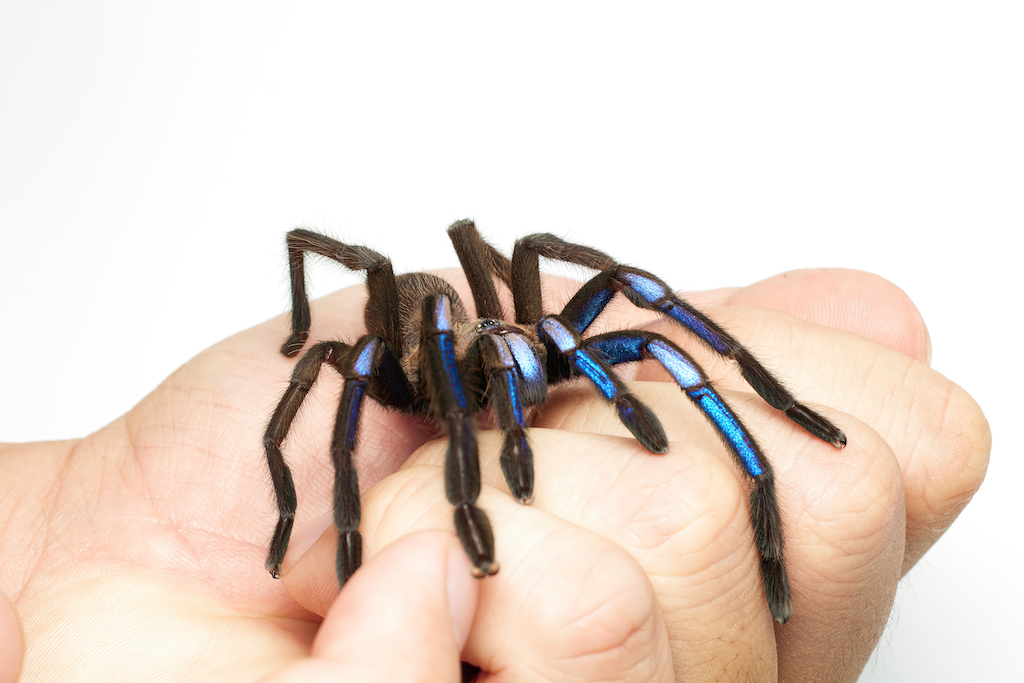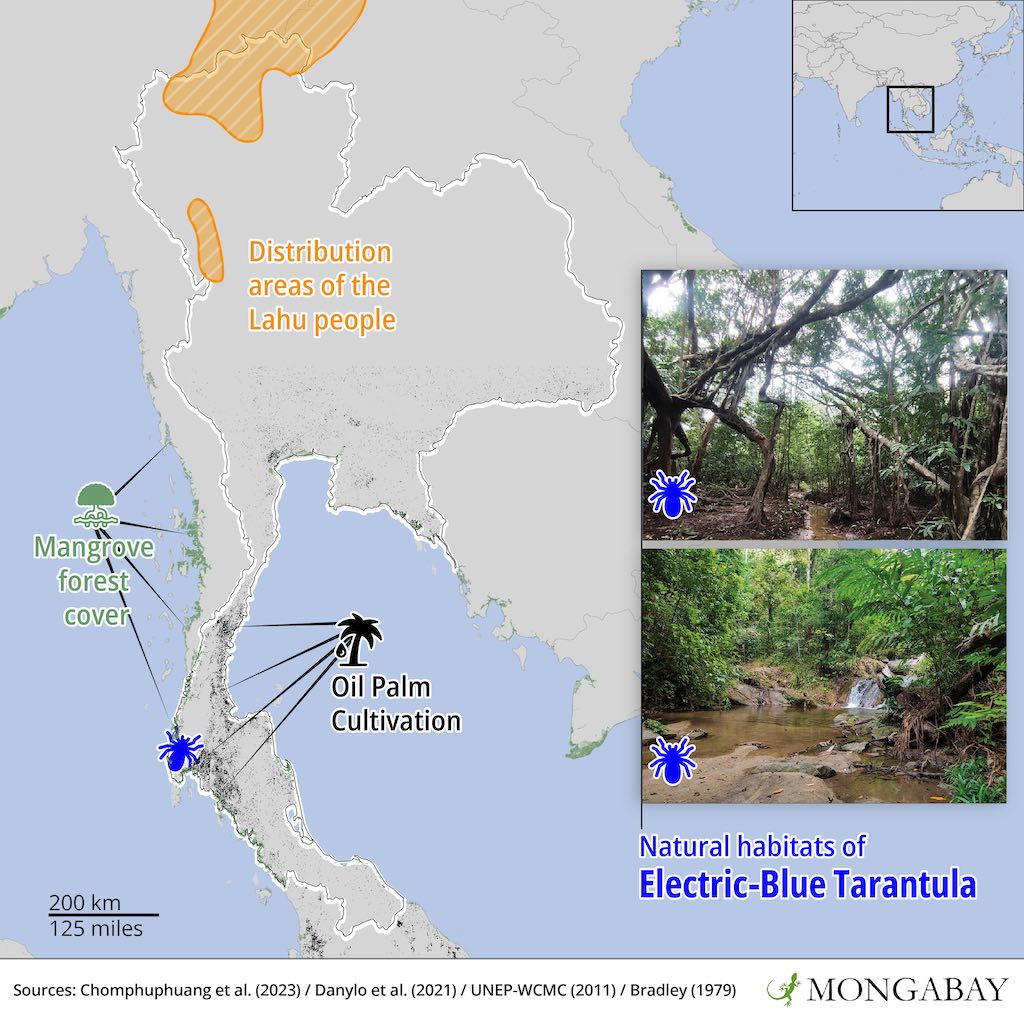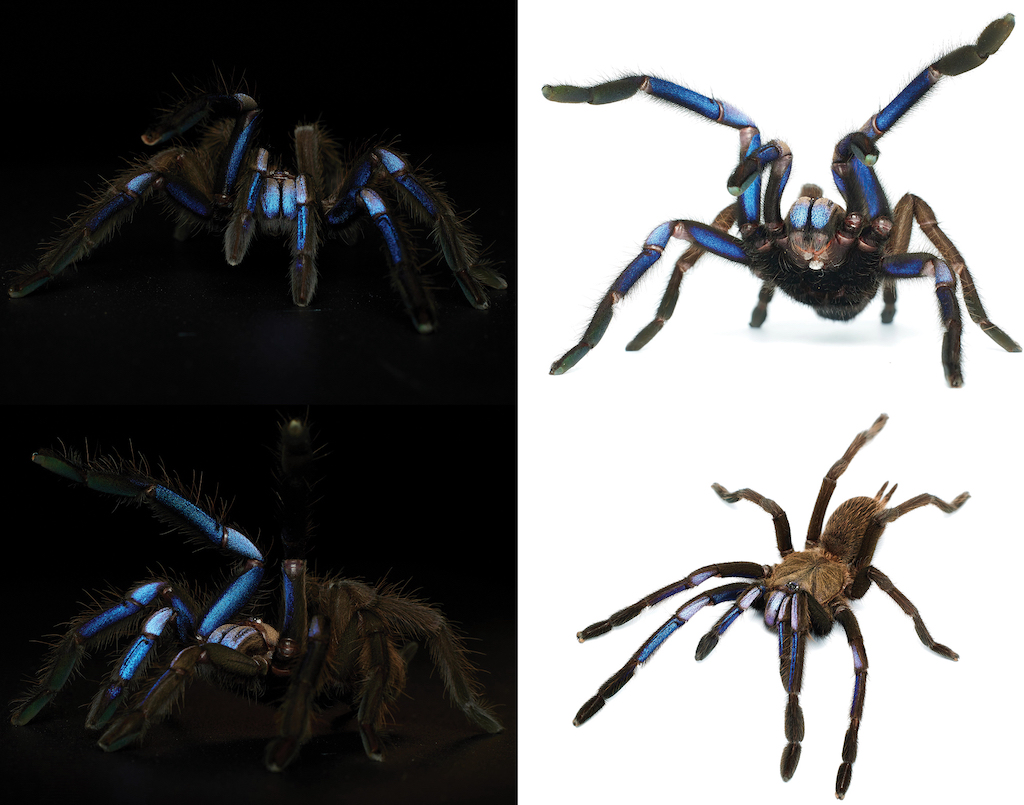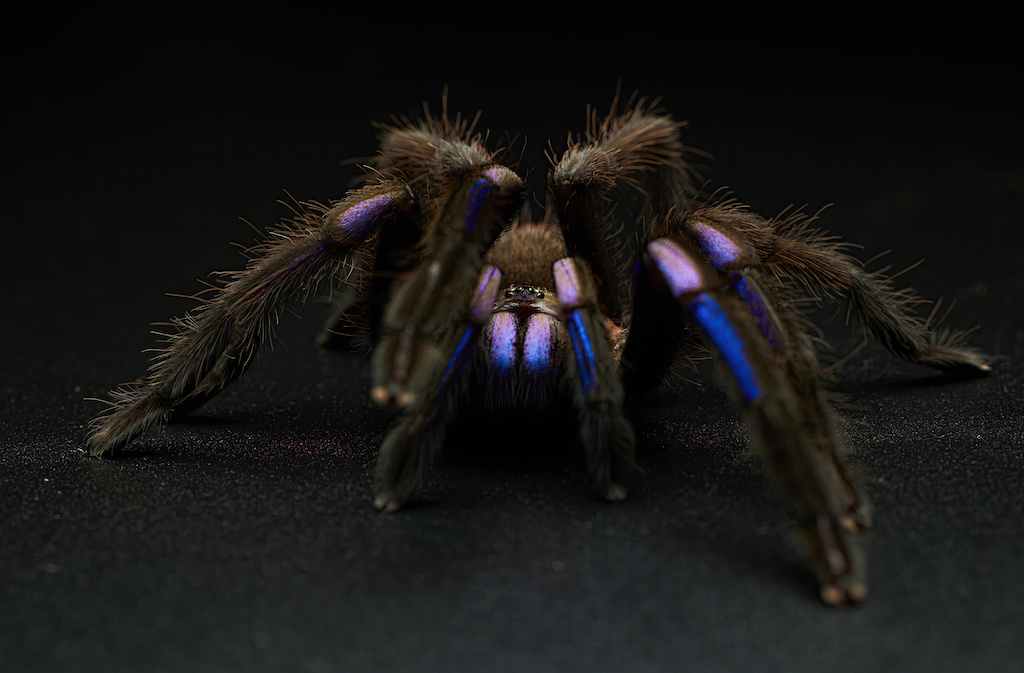New blue tarantula is a stunner
Tarantulas are a type of large (and often hairy) spider found in forests and deserts around the world. Tarantulas also live in some coastal mangroves. A new species of mangrove-living tarantula was recently discovered in Thailand and it is a stunner!
Enter the electric blue tarantula …

This tarantula lives in mangroves
A team of researchers from Khon Kaen University and wildlife YouTuber JoCho Sippawa went on an expedition in 2022. They were looking for a tarantula species that was known from the pet trade, but had not been seen in the wild. They explored the muddy mangrove forests of Phang Nga province on the coast of Thailand.

While surveying the mangroves, the researchers spotted these eye-catching tarantulas on trees. These tarantulas stand out because they are blue! And not just any blue, but brilliant, flashy, electric blue.
Why are these tarantulas electric blue?
The spider’s vivid blue coloration is not created by pigments. The blue color is created by nanostructures on the tarantula’s hairs that manipulate light. When viewing the tarantula, light filters through the tarantula’s hair structures and produces an iridescent (glowing) blue effect.
The same structures produce hues of violet in parts of the spider like the chelicerae (mouth), carapace (upper body), and leg segments.

Scientists are not sure why some tarantulas evolved to be blue. One idea is that male blue tarantulas may look more attractive to female tarantulas. But tarantulas can’t see color well, so they probably don’t communicate through color. Other ideas are that the blue helps tarantulas hide from predators, or signals to predators that they are toxic.

Tarantulas, from the family Theraphosidae, come in many colors, including black, green, red, and yellow. These colors depend on the species and their habitats. “Remarkably, this study has revealed that blue coloration has independently evolved in at least eight different tarantula species. This suggests that blue coloration serves some significant purpose,” said Narin Chomphuphuang, leader of the team that discovered the tarantula.
These electric blue tarantulas may be in danger
The electric blue tarantula is the first-known tarantula species found in Thai mangroves. And they may be in danger. Narin said he’s concerned about the tarantulas’ mangrove habitats, as forests are being cleared for oil palm cultivation: “One year after our discovery, we have observed that many areas have been destroyed for agricultural purposes.”
Habitat destruction and hunting have severely impacted local tarantula populations in Thailand. As a result, all Theraphosidae (the spider family containing all tarantula species) species in Thailand were classified as controlled wildlife in 2022 by the Ministry of Natural Resources and Environment. This means permits are required from the Department of National Parks, Wildlife and Plant Conservation to export or import any tarantulas.
“It is essential to take these steps to prevent further declines in tarantula populations and protect them for future generations,” wrote the team that described the new blue tarantula species.
They team would like to see mangrove forests protected for the tarantula and for conserving the entire ecosystem where the tarantula lives.
How can you help this tarantula and other spiders?
If you love spiders (of course you do!), here is how you can be a responsible spider carer:
- Don’t squish it! Spiders are important.
- You can help protect spider habitat in your backyard or local park.
- If you are interested in keeping pet spiders, buy your pet from an authorised seller who has a license to breed or collect spiders. Do not collect spiders from the wild. It is illegal in many parts of the world and the illegal pet trade threatens some spider species, including many tarantulas.
Learn more about spiders on Mongabay Kids
Online shopping threatens some spider species with extinction

David Brown adapted this story for Mongabay Kids. It is based on an article by Liz Kimbrough, published on Mongabay.com:
Citation:
Chomphuphuang, N., Sippawat, Z., Sriranan, P., Piyatrakulchai, P., & Songsangchote, C. (2023). A new electric-blue tarantula species of the genus Chilobrachys Karsh, 1892 from Thailand (Araneae, Mygalomorphae, Theraphosidae). ZooKeys, 1180, 105-128. doi:10.3897/zookeys.1180.106278






